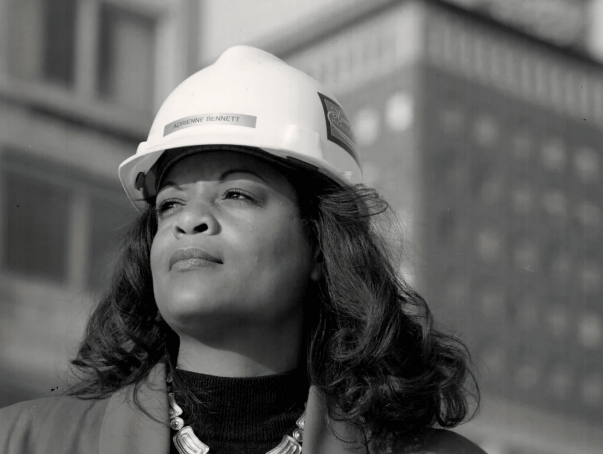For Black History Month, we’re turning the spotlight onto pioneering figures who not only broke racial barriers and made lasting contributions to the field of construction and civil engineering. Their resilience, innovation, and dedication not only challenged the status quo but also paved (and are paving still – number five on the list is a contemporary icon) the way for future generations to build upon their monumental achievements.
1. Archie Alexander — Architecture/Engineering
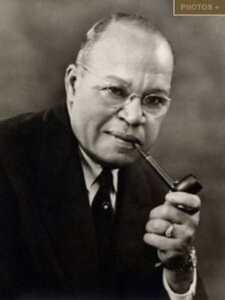
Archibald Alphonso Alexander, born in 1888, was a trailblazing African-American architect and engineer. In 1912, he became the first African-American to earn a degree from the University of Iowa’s College of Engineering.
He also dominated on the U of I football field, earning him the nickname “Alexander the Great”.
Despite facing warnings from his professors about the challenges he would encounter in finding work due to his race, his career swiftly progressed, leading to the establishment of Alexander & Repass with his colleague Maurice Repass. Their firm focused on the construction of bridges and viaducts, undertaking numerous projects in Washington, DC. including the bridge and seawall at the Tidal Basin on the National Mall.
Alexander & Repass hired both white and black workers for their projects, who worked together in mixed work crews at a time in American history when this was almost unheard of. The Tidal Basin Bridge and Seawall cost $1 million to build, and the construction employed over 160 workers. Over his career, Alexander oversaw more than 300 projects, earning his firm the distinction by Ebony magazine as “the nation’s most famous interracial business.”

As if all of that wasn’t impressive enough, Alexander’s achievements extended into the political arena; he was appointed Governor of the US Virgin Islands by President Eisenhower, serving from 1954 to 1955. His legacy includes scholarships at the University of Iowa, Tuskegee Institute, and Howard University; a Harmon Award in 1926; and induction in the Chick-Fil-A College Football Hall of Fame.
Archibald Alexander’s life and career are testaments to his resilience and pioneering spirit in the face of racial barriers, making him a significant figure in American history and civil engineering.
2. Hattie Scott Peterson — Civil Engineering
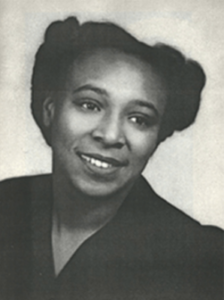
Hattie Scott Peterson, born in Virginia in 1913, emerged as a pioneering figure in the realm of civil engineering, marking her place in history as the first African-American woman to become a licensed civil engineer in the United States. Her illustrious career spanned various significant projects, including the construction of the Alaskan Highway and numerous military construction endeavors during World War II, showcasing her remarkable skills and dedication to her field.
Peterson’s career achievements are a testament to her pioneering spirit and expertise. Initially working in the U.S. Government Accounting Office during World War II, she audited government contracts, laying the groundwork for her future endeavors. In 1947, Peterson began her tenure as a survey and cartographic engineer for the U.S. Geological Survey (USGS), further solidifying her role in the engineering field. Her groundbreaking career continued in 1954 when she joined the local U.S. Army Corps of Engineers (USACE), becoming the first female engineer in the organization and focusing her efforts on flood risk reduction.
Beyond her professional achievements, Peterson was a staunch advocate for the engineering profession among women and championed women’s rights. She was actively involved in various organizations, including the National Technical Association and the American Society for Photogrammetry and Remote Sensing (ASPRS). Peterson’s legacy extended beyond her lifetime, as she left an endowment for scholarships at Howard University to support future engineers.

In recognition of her contributions and to honor her memory, the Sacramento district of the USACE annually awards the Hattie Peterson Inspirational Award. This accolade celebrates individuals who exemplify personal and professional perseverance through social challenges, embodying the spirit and resilience of Peterson herself.
Hattie Scott Peterson’s remarkable life and career broke barriers and paved the way for future generations of African-American women in STEM fields. Her enduring legacy continues to inspire and influence the world of engineering, reminding us of the power of determination, excellence, and advocacy in overcoming obstacles and achieving greatness.
3. David N. Crosthwait Jr. — Mechanical & Electrical Engineering
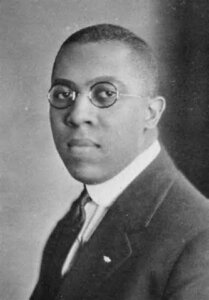
David N. Crosthwait Jr., born on May 27, 1898, in Nashville, Tennessee, was a distinguished African-American mechanical and electrical engineer, inventor, and writer. He grew up in Kansas City, Missouri, and received a Bachelor of Science in 1913 and a Masters of Engineering in 1920 from Purdue University.
Crosthwait’s expertise lay in air ventilation, central air conditioning, and heat transfer systems. His innovative work led to the creation of various heating systems, refrigeration methods, temperature regulating devices, and vacuum pumps.
For these inventions, he held 39 United States patents and 80 international patents. In the 1920s and 1930s, Crosthwait invented a vacuum pump, a boiler, and a thermostat control, all aimed at creating more effective heating systems for larger buildings. Some of his most notable accomplishments include designing the heating systems for the Rockefeller Center and New York’s Radio City Music Hall.
In addition to his technical inventions, Crosthwait also contributed significantly to educational resources in his field. He wrote and revised an instruction manual and guides for heating and cooling with water, as well as standards and codes related to heating, air conditioning, and ventilation systems.

After retiring from the field in 1971, Crosthwait continued to share his knowledge by teaching a course on steam heating theory and control systems at Purdue University. In recognition of his contributions to engineering, Purdue University awarded him an honorary doctorate in 1975. David Crosthwait passed away a year later in 1976.
Throughout his career, Crosthwait was a trailblazer in his field, not only for his technical innovations but also for his role as an educator and writer. His work in heating and cooling systems has left a lasting impact on the field of engineering and continues to be recognized for its significance in modern HVAC technologies.
4. Robert R. Taylor — Architecture
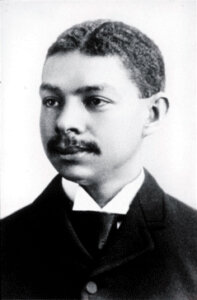
Robert R. Taylor, born in 1868 in North Carolina, was the first accredited African-American architect, and the first African-American student enrolled at the Massachusetts Institute of Technology (MIT).
His career was deeply intertwined with the Tuskegee Institute, where he was an early and influential faculty member. Working closely with Booker T. Washington, he was instrumental in both the physical development of the campus and the formation of its industrial curriculum. His architectural practice spanned over forty years in the American South, and he was a part of what was possibly the nation’s first black architecture firm, Taylor and Persley, founded in July 1920 with Louis H. Persley.
Taylor’s architectural work extended beyond Tuskegee, as he designed buildings for several other HBCUs. His designs were not just structures but also embodied the value of physical labor and the capabilities of African Americans in the building trades. This was exemplified in his first project at Tuskegee, the Science Hall (Thrasher Hall), which was constructed entirely by students using bricks made under his supervision.
In addition to his architectural achievements, Taylor served as vice-principal of the Tuskegee Institute beginning in 1925. His international work included a trip to Liberia in 1929 to lay out plans for the Booker Washington Institute. He also served on the Mississippi Valley Flood Relief Commission, appointed by President Herbert Hoover, and was chairman of the Tuskegee chapter of the American Red Cross.
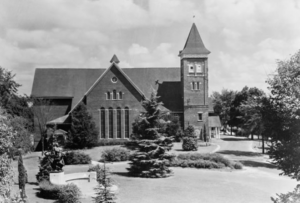
Taylor’s life came to a close on December 13, 1942, while attending services in the Tuskegee Chapel, a building he considered his most outstanding architectural achievement. The Chapel was constructed almost entirely with student labour using 1.2 million bricks that were fired on site out of local Alabama clay.
In honor of his significant contributions, the Taylor School of Architecture and Construction Science at Tuskegee University was named after him. His legacy is further commemorated by a postage stamp issued by the US Postal Service bearing his likeness.
His life and career stand as a testament to his resilience, pioneering spirit, and significant contributions to American architecture and education, continuing to inspire future generations of architects and students.
5. Adrienne Bennett — Commercial Plumbing
Adrienne Bennett, the first Black woman in the United States to receive a master plumber license, was approached by a recruiter from the Mechanical Contractors Association of Detroit at a Jimmy Carter election rally in 1976s. He informed her about a federally-sponsored apprenticeship program for minority women in skilled trades. At 22, Adrienne passed the admission test for the Plumbers’ Union, Local 98’s five-year apprenticeship program.
The apprenticeship was challenging: working in extreme cold, enduring long commutes, and being the sole woman on all-male worksites. Despite the adversity, including hostility and harassment from male colleagues, she persevered. In one notable incident, after being physically assaulted by a coworker, Adrienne defended herself (seriously, she threw a wrench at him, cracking his hard hat) and brought an end to that harassment.
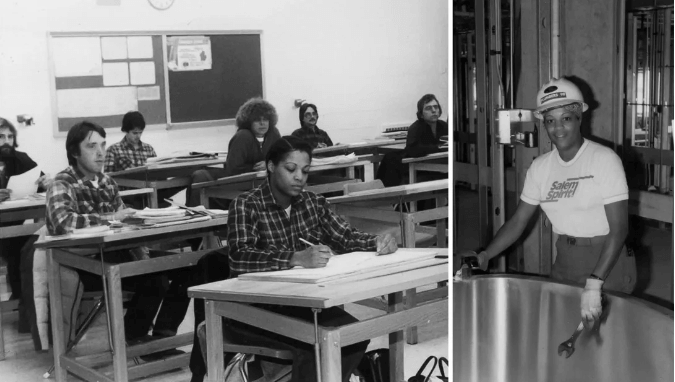
Adrienne’s determination paid off when she became the first woman in Michigan to complete a plumbing apprenticeship program. In 1987, after accumulating 4,000 hours of experience, she passed the master plumber exam, earning her state license and becoming the first African-American female master plumber in both Michigan and the United States.
In 2008, Adrienne founded Benkari, LLC, a commercial plumbing and water conservation business, alongside her son, A.K. Bennett. The company has undertaken significant projects, including the restoration of the historic Michigan Central Station in Detroit. Today, Adrienne Bennett holds the distinction of being the first and only African-American licensed female Master Plumber for over 30 years, as well as a Certified Plumbing Contractor, Plumbing Inspector, and Certified Medical Gas Inspector and Installer.
Adrienne Bennett’s story is not just one of personal achievement but also a testament to breaking down barriers and paving the way for future generations in the field of plumbing and construction.
